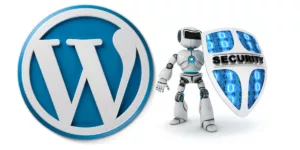WordPress is an excellent system to use when developing a website. Although the system is well developed and stable, it can still be the target of hacks and malware. Because the Internet is full of threats of all kinds, it’s important to implement security measures for WordPress hosting.
Luckily, many steps for securing the website are relatively easy to do. In many instances, all that’s required is the right plugin for the job. However, there are a few other things that can be done to improve the system.
Below are some of the most important steps anyone should consider when investing in WordPress hosting. Not only will they greatly reduce the risk to the site, but some will even improve overall functionality.
Use a Unique Administrator Login
By default, many installations of WordPress use an “admin” account during the setup process. Unfortunately, many people rely on this account to be a main login for the system. The bad part is the criminal element knows this, which makes things like brute force attacks easier to commit.
Getting rid of the admin account is relatively simple. All an owner needs to do is create a unique administrator in WordPress and delete the default “admin” account. This should be one of the first things any WordPress operator should do once installing the system.
Automatic Backups
Backups should be a high priority on any website owner’s to-do list. These files help recover from even the most damaging of circumstances relatively quick. By storing backups of the files and database, a developer can easily avoid losing import information and content.
Backing up the files is a good idea, but setting them to be automatic takes the work away from the developer. There are many plugins available to WordPress that make these automated processes much easier to implement. For instance, UpdraftPlus does this as well as provide Cloud integration for Google Storage, OneDrive, Dropbox and more.
Keep Everything Current and Updated
Keeping any piece of software updated is vital to protecting the system. When exploits are discovered in WordPress, the developers automatically push them out onto the Internet. However, major changes are often available in core updates.
The WordPress admin dashboard will advise developers when there is a new update available. A red dot with a number will show up on the left admin panel while two arrows forming a circle with a number will be displayed in the top bar. Additionally, various settings and plugins are available to make these updates automatic.
Remove Unused Themes and Plugins
When using WordPress, many developers will install various plugins and themes to find the perfect tools for the site. Over time, this list of unused add-ons can get quite extensive and overlooked. Even an unused plugin or theme can lead to compromises in security if not updated regularly.
The best way to avoid this is to remove unused elements of the site. Not only does this improve security, but it may also contribute to speed. It’s also more efficient as developers won’t have to sift through a long list of tools that are no longer needed on the system.
Keep Plugins to a Minimum
Reducing the number of plugins installed in WordPress reduces security threats. Each add-on is one more element that increases the chances of being compromised. By keeping them to a minimum, developers have less to worry about when it comes to updates and maintenance as well.
Some plugins may also contribute to slowing a website down. This is especially true for tools that make regular calls to a database or pull information from a third-party site. This means being minimalist with plugins contributes to security as well as site performance.
Secure the Site with Effective Plugins
Although most hosting platforms will have effective server-side security in place, this does little to protect any website from direct attacks. As a result, many people will install security plugins to protect files and data. Since many quality plugins are free to use, there is simply no reason why a website should be without.
For instance, Wordfence is one of the most popular and highly rated plugins for WordPress security. It is absolutely free to use and comes with a myriad of security tools such as firewalls, blocking, file scanning and more. In fact, Wordfence also supports multi-site configurations.
Tighten Up Login Practices
The “admin” account isn’t the only one that can lead to a compromised website. In a multi-user environment, anyone with credentials to log into WordPress can pose a serious threat. This is why hardening login practices is a necessity.
A few ways to do this include:
- Forcing strong passwords for users.
- Using email addresses instead of traditional usernames.
- Using two-factor authentication, or 2FA.
- Moving the login page to a new URL.
- Clearly define and monitor registered user roles.
One way to avoid brute force attacks in the login screen is by limiting the number of failed attempts from any one user. Plugins like WP Limit Login Attempts will temporarily block IP addresses if a certain number of consecutive attempts fail.
Use .htaccess to Protect wp-config.php
There is great potential for controlling how a website performs in the wp-config.php file of WordPress. With a small bit of text, users can protect it from being directly edited by anyone except for the administrator. This is done by adding the following to .htaccess:
<Fileswp-login.php>
order deny,allow
Deny from all
allow from 192.168.0.1
</Files>
Take note of the “192.168.0.1.” This IP address needs to be changed to the administrator’s address for his or her Internet connection. This can be found by typing in, “ip address” in Google.
Never Underestimate the Need for Protection
Even the smallest of WordPress hosting sites can be targeted by hacks. A domain doesn’t need to be popular to become a host to a phishing page or central locale for sending spam. Preventative measures such as these take little time to add while greatly enhancing the safety and security of the site. Never assume there is enough security on a website. In reality, there is no such thing.








